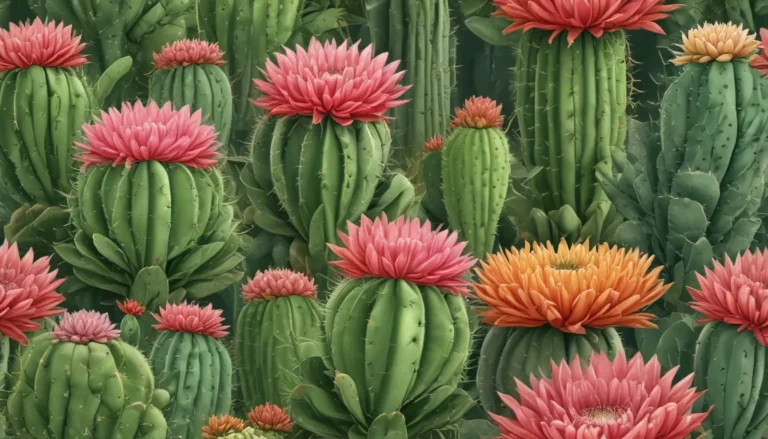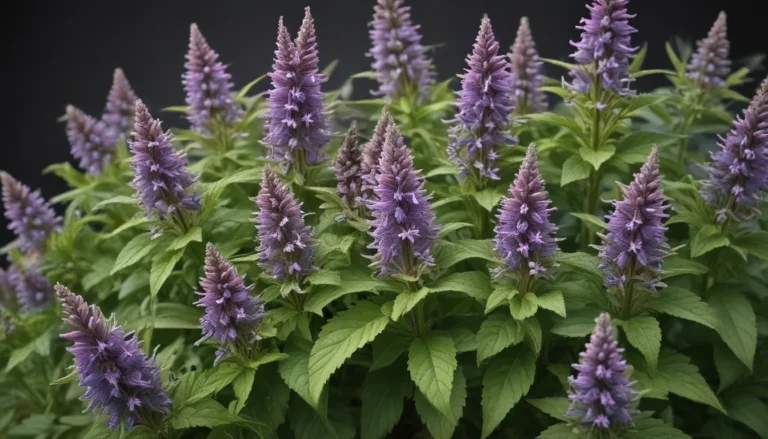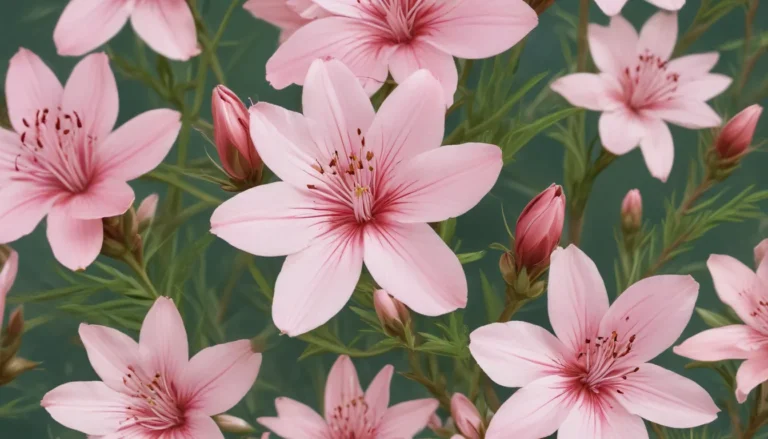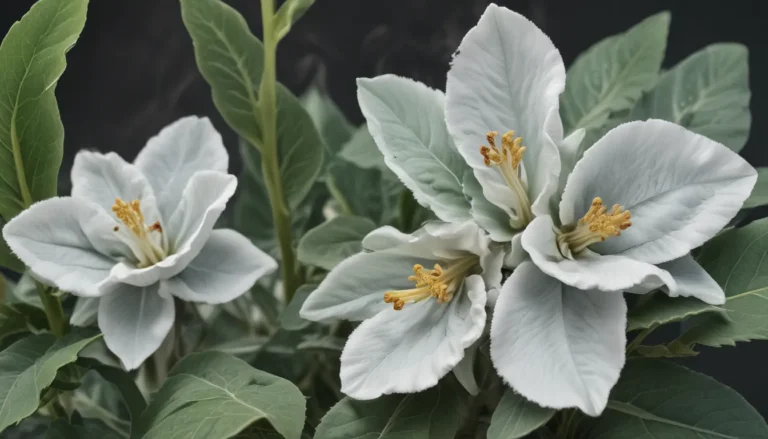The pictures we use in our articles might not show exactly what the words say. We choose these pictures to make you interested in reading more. The pictures work together with the words but don’t take their place. The words still tell you the important facts.
Lantana is a mesmerizing plant that captures the hearts of gardeners and nature enthusiasts alike with its vibrant hues and captivating aroma. Originating from tropical regions, this versatile plant has spread its roots in gardens across the globe. Renowned for its ability to attract pollinators and thrive in diverse environmental conditions, Lantana has become a beloved choice for both amateur and experienced gardeners.
In this enlightening article, we will unveil 11 enigmatic facts about Lantana that will deepen your admiration for this extraordinary plant. From its diverse species and unique growth patterns to its historical significance and medicinal properties, Lantana harbors a treasure trove of mysteries waiting to be uncovered. Join us as we embark on a journey into the realm of Lantana and uncover the captivating facets of this botanical marvel.
Discovering the Beauty of Lantana:
- Lantana is a vibrant and versatile plant native to tropical regions, celebrated for its color-changing flowers and its allure to butterflies and hummingbirds. However, it's essential to approach it with caution due to its potential invasiveness and toxicity to animals. - Lantana's exquisite flowers, resilience to drought, and ease of propagation make it a sought-after option for gardens. Nonetheless, being mindful of its toxic nature to animals and its invasive tendencies is crucial.
The Splendor of Lantana’s Blooms:
Lantana is renowned for its dazzling array of colorful flowers, ranging from bold reds and oranges to delicate pinks and purples. These captivating blooms make Lantana a popular choice for embellishing gardens and landscapes.
Lantana’s Tropical Roots:
Hailing from tropical regions such as Central and South America, Africa, and Southern Asia, Lantana thrives in warm climates and basks in sunny locations, showcasing its vibrant blooms at their best.
The Mystique of Lantana’s Color Transformation:
One of the most enchanting features of Lantana is its ability to undergo color changes as its flowers mature. Starting off with one hue, the blooms gradually transition to another, creating a mesmerizing and ever-evolving spectacle.
A Haven for Butterflies and Hummingbirds:
The radiant colors and enticing nectar of Lantana flowers make them irresistible to butterflies and hummingbirds. Cultivating Lantana in your garden can transform it into a sanctuary for these exquisite creatures.
Resilience in Dry Conditions:
Lantana stands as a symbol of resilience in arid environments, withstanding drought periods with grace. Its ability to thrive in dry conditions makes it a low-maintenance plant ideal for regions with scant rainfall.
Aromatic Leaves that Delight the Senses:
Crushing the leaves of the Lantana plant releases a delightful fragrance, often described as citrusy or minty. This aromatic essence adds to the plant's overall charm, captivating the senses of all who encounter it.
Traditional Medicinal Uses:
Various parts of the Lantana plant, including its leaves and flowers, have been utilized in traditional medicine for their antimicrobial and anti-inflammatory properties. Believed to possess healing qualities, Lantana has been employed in treating conditions such as coughs, colds, and skin irritations.
Caution: Toxicity to Animals:
Despite its beauty, it's vital to acknowledge that all parts of Lantana can be toxic to animals if ingested. To safeguard your pets' well-being, it's advisable to keep them away from Lantana plants to prevent any potential health hazards.
Versatility in Cultivation:
Lantana adapts effortlessly to various growing conditions, thriving as a ground cover, shrub, or even a trained vine. Its flexibility makes it a favored choice among gardeners and landscapers seeking a plant that can flourish in diverse environments.
Propagation Made Simple:
Easily propagated from cuttings, Lantana is a plant that fosters sharing and cultivation. Taking a cutting from an existing plant, placing it in moist soil, and witnessing it sprout into a new Lantana plant is a rewarding experience for any gardening enthusiast.
Potential Invasiveness Concerns:
While cherished for its beauty, Lantana's rapid spread and tendency to dominate other plant species have raised concerns about its invasive nature in certain regions. Careful consideration is necessary when planting Lantana to prevent any unintended ecological disturbances.
Engaging with the Enigmatic Lantana:
Lantana emerges as a captivating plant steeped in history and shrouded in intriguing facts. From its kaleidoscopic hues and allure to butterflies to its traditional medicinal uses, Lantana continues to captivate individuals worldwide. Whether you possess a green thumb or simply harbor an interest in distinctive flora, exploring the enigmatic world of Lantana promises a fulfilling journey. The next time you encounter this vibrant shrub, take a moment to appreciate its beauty and reflect on the fascinating facts that encompass Lantana.
Frequently Asked Questions:
- Is lantana a native plant?
-
Yes, Lantana is native to tropical regions of the Americas, Africa, and India.
-
Can I grow lantana in my garden?
-
Absolutely! Lantana is a versatile plant that thrives in a wide range of climates and soil types.
-
Are all parts of the lantana plant poisonous?
-
While the leaves and unripened berries of Lantana are toxic if ingested, the flowers and ripe berries are generally non-toxic to humans.
-
How do I care for lantana plants?
-
Lantana plants flourish in full sun, well-drained soil, and regular watering. They are low-maintenance and can endure drought conditions.
-
Does lantana attract butterflies?
-
Yes, Lantana's vibrant and fragrant flowers are known to attract butterflies.
-
Can I use lantana for medicinal purposes?
-
Traditionally, Lantana has been utilized in herbal medicine for various ailments; however, consulting a healthcare professional before use is advisable.
-
How fast does lantana grow?
-
Lantana is a fast-growing plant that can reach a height of 2 to 6 feet within a year, dependent on growing conditions.
-
Does lantana need to be pruned?
-
Pruning Lantana aids in promoting bushier growth and increased flower production. Early spring or late winter is recommended for pruning.
-
Can lantana be grown indoors?
-
While primarily an outdoor plant, Lantana can be cultivated indoors as a potted plant in well-lit areas with ample sunlight.
-
How long do lantana flowers last?
- Lantana flowers can grace your garden with their vibrant hues for several weeks or even months.
-
Does lantana have natural predators?
- Certain insects and pests, such as aphids and spider mites, may be considered natural predators of lantana. Adequate care and maintenance can help prevent infestations.
Embrace the Allure of Lantana:
Our dedication to delivering informative and engaging content drives our mission to enlighten and inspire our readers. Every fact shared on our platform is generously contributed by individuals like you, enriching our knowledge base with a wealth of insights and information. Upholding the highest standards of accuracy and reliability, our committed editors meticulously review each submission to ensure that the facts presented are not merely captivating but also credible. Trust in our unwavering commitment to quality and authenticity as you delve into the world of Lantana and embark on a journey of discovery and learning.






